Meroglossa rubricataBubbling Meroglossa rubricata Colour Variation Communication Female and Male Flower Selection Nesting Threats
Images and Contributor Author Gary Taylor ◦
I’ve got a couple dozen Meroglossa rubricata nesting in my BeeTown and they’re not like other native bees. They don’t emerge from a sealed nest, spend four weeks working their guts out from sun up to sun down furiously filling chambers, packin’ ’em with pollen and capping them off before dying… They just seem to be there all year ’round, so I get to watch them a lot… And I might sound like a bit of a nutter here but bear with me (I’m much more confident when I’ve got my bear with me…) awhile back on a warm, still late afternoon, watching my BeeTown, I could hear these faint little creaking noises… like a gecko in a cave in the distance… (if you haven’t heard a gecko, the little ones we have here sound like a tiny frog too scared to let out a proper noise so they just wisper a short shy little “nyip?..” like “shhh, is there anyone there?) and I’ve got heaps of geckos, nature loves my place, but this was in stereo, and a little sharper, “Zzip” off to the right, “Zzip” off to the left, “Zzip” again to the right… over and over, so evenly timed it sounded like communication… But so faint… Took me awhile to be sure but I realised it was the bees making that noise… Was it really communication? Having spent a lifetime studying animal behaviour it sure as hell sounded like it, as I’ve said before, body language and the sounds made to express emotion are universal amongst all species…
I’ve now spent many hours over many days over many months not just watching but listening to them, and after today I’m convinced….
Ok, so back to the story… As I was standing there I heard a faster repetitive “Zzip, zzip, zzip…” coming from one of the nests. When I looked to see what was going on I saw one of the Merroglossa turn around in her hole and go further in as another slipped under her and came out. It had a little fly around and landed on a piece of wood right in front of me (first two pics).
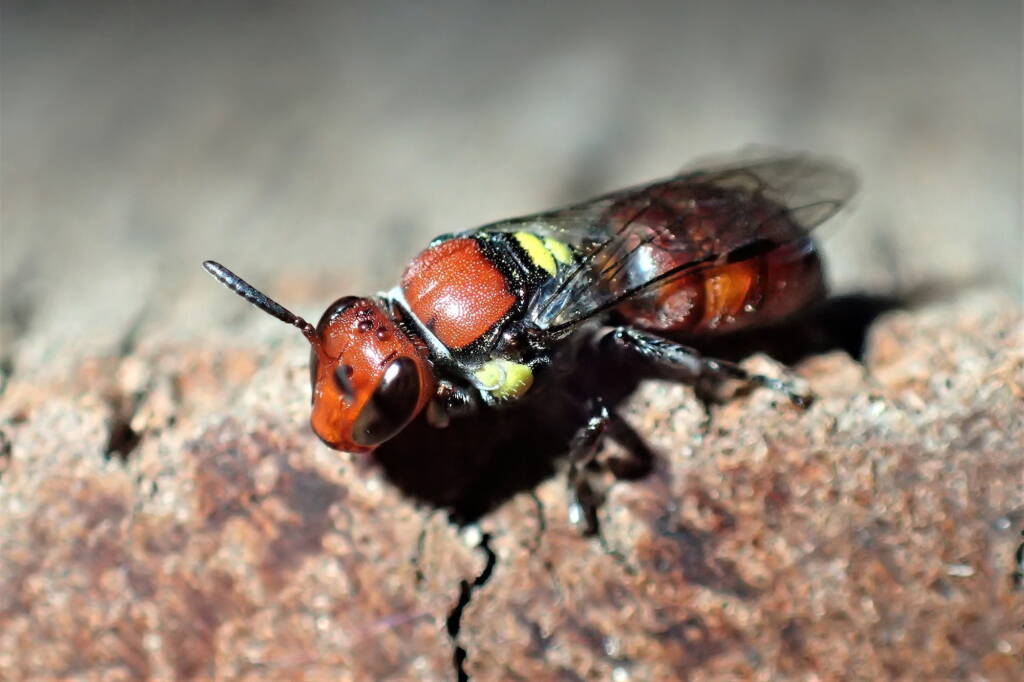
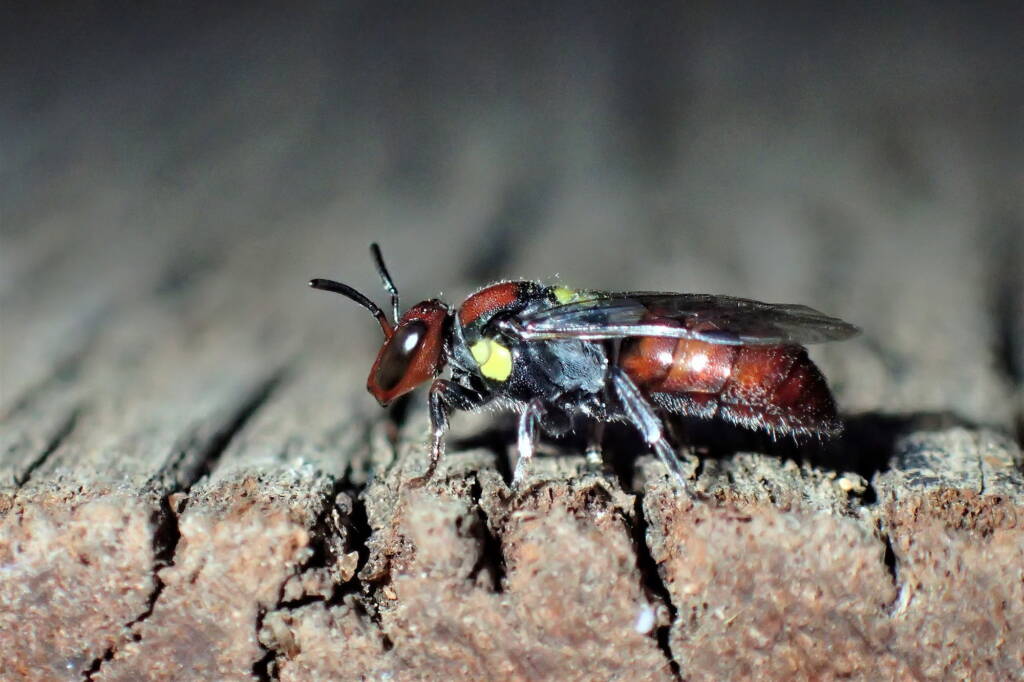
Wow, so bright and shiny and new looking… I reckon this little girl has just taken her first flight… Which again makes me wonder if the mother lives long enough to stay and guard and nurture her children…
Then off to my right I hear the same “Zzip, zzip, zzip..” and another young one emerged from a nest. It too had a little fly around and then it landed back on the nest it came from (third pic). But when she tried to get back in, (Mum?) said “No, you’re old enough to start your own nest now…” and wouldn’t let her in (fourth pic).
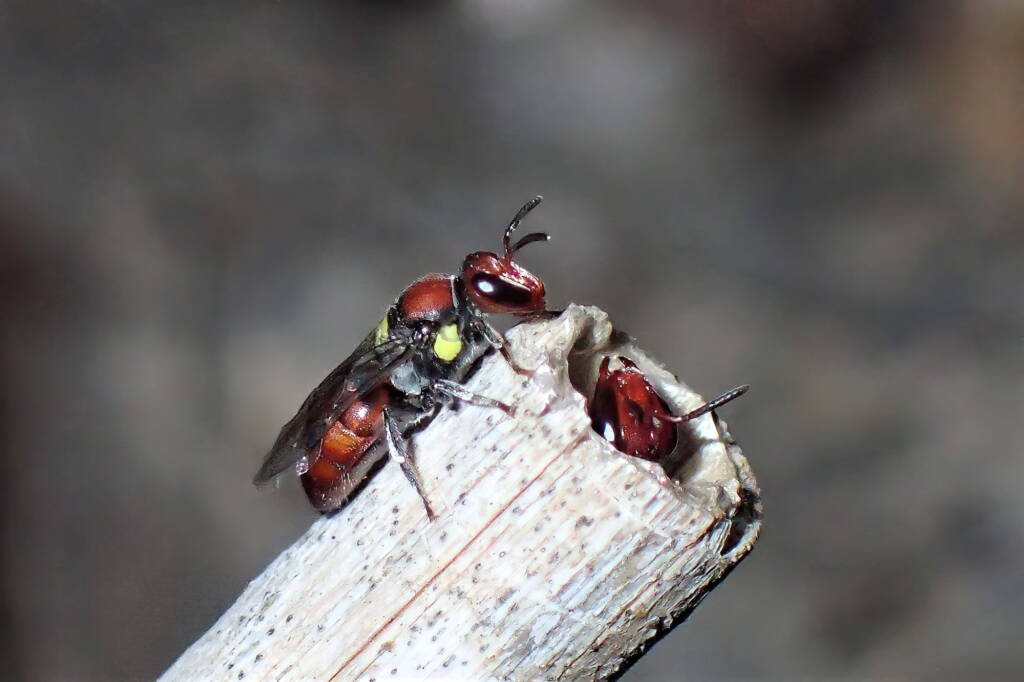
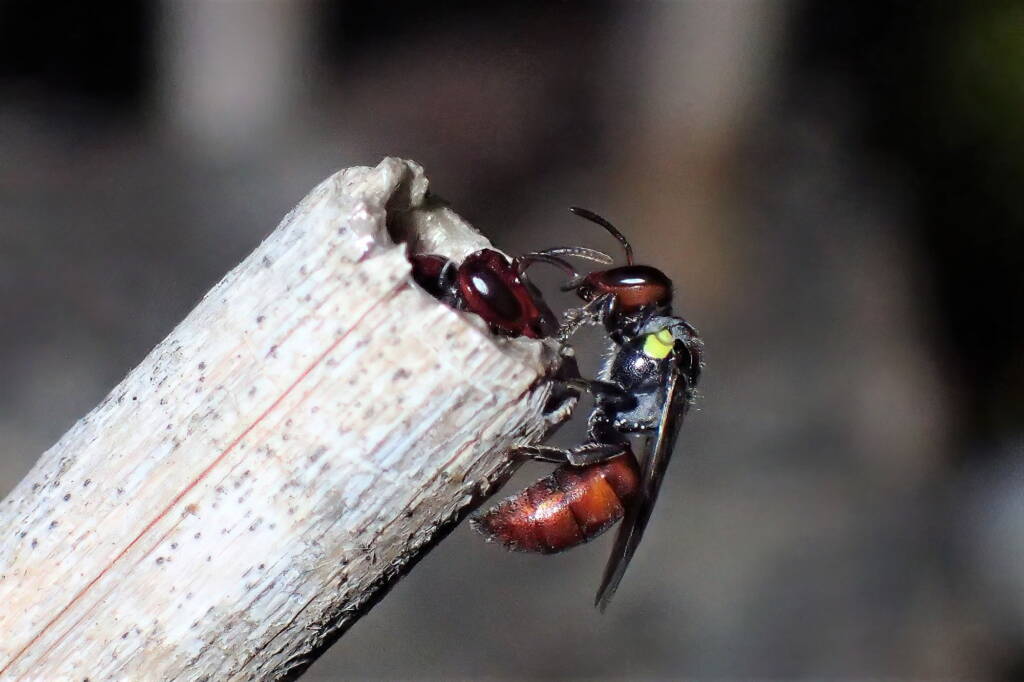
So she left, albeit somewhat despondently, but she didn’t go far. Only a few inches away she landed on an old abandoned wasp nest (last pic), looking less than confident, and figured that was as good a place as any to spend her first night all alone out in the wild…
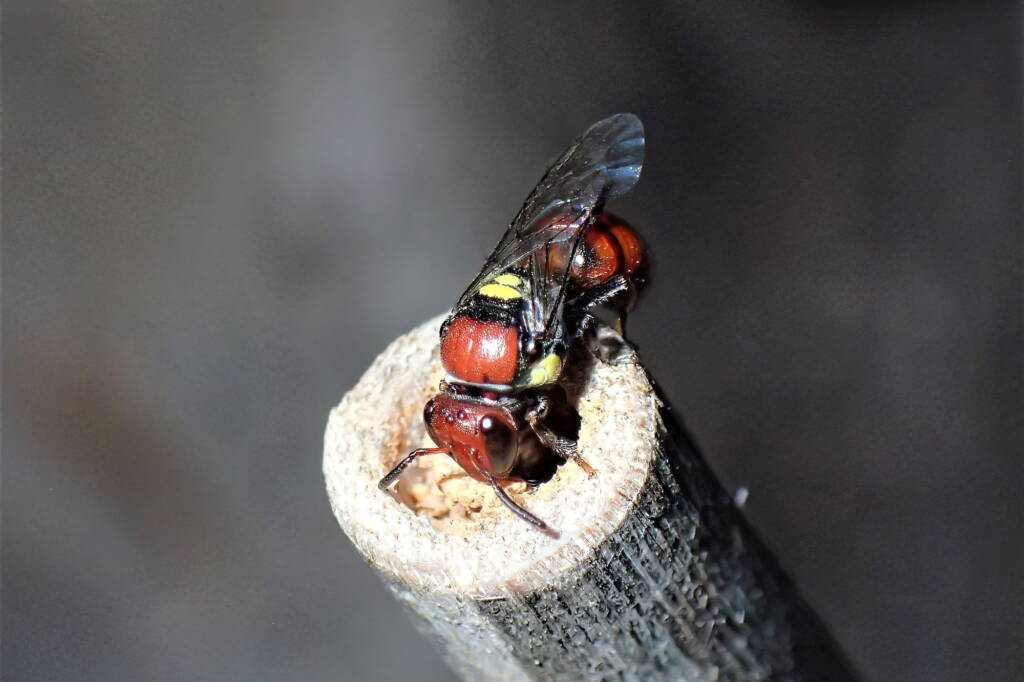
There’s another thing that strikes me here too… Most bees emerge as fully developed, full size adults, but you can see the difference in the size of the head of the “adult” compared to the young one in the 3rd and 4th pics…
And in all the pics of the young ones, their mouth area looks different, like the jaws haven’t fully developed yet… Maybe they’re just tucked away… maybe they don’t develop early because they don’t have to chew their way through a rock hard wall to get out…
Extracts from conversation interaction by members of the Bee Aware of Your Native Bees (Australia), Facebook group:
- I was thinking it could be male vs female but the baby is female as it lacks the face markings. Interesting though looking at PaDIL photos the male head is much narrower than the female but I wonder how accurate the scales are on the photos. Look at the Head front images.
- The males are definitely a bit smaller, but not as much as it appears in those pics on PaDIL I think.
- Had another look at PADIL, the scales are definitely wrong, how disappointing. So you may be right.
- I reckon you can see the difference in head size in the third pic pretty clearly.
- The males are definitely a bit smaller but not as much as it appears in those pics I think.
- I put callipers to the question and yes she in the hole is larger than she wanting to get in. So what does that mean, as far as I can tell from Google, bees don’t molt after they have their exoskeleton. Interesting.
- Wrong again, I found this “Size polymorphism is common in bees, and is determined by environmental factors such as temperature, brood cell size, and the diet provided to developing larvae.”
- So it’s more a time of year, conditions situation?
- Yes I think so, food supply mostly perhaps. What are you doing up this early?
- Thanks for the comment on polymophism, that’s something I have believed for a long time but was constantly told that was rubbish on another page. In the little Megachile bees I call “Asoc bees” the size difference can be so noticeable that you could bee mistaken for thinking they were a different species. So, although time of year and availability of food may attribute to some cause in some cases, in this case the big and small ones were emerging and nesting at the same time, which leads me believe it comes down to how much food the mother chooses to provide. Asoc bees are inherently lazy, and I don’t mean in an inactive way, I mean as in they’d rather steal material from other bees caps than go to the effort of having to go and collect it from further away. That along with the weird crap they do collect, tells me they have a “that’ll do…” attitude… Not much of a stretch to imagine that that attitude may extend to the supply of food for the upcoming newborns…
- Fascinating and funny as usual. I wonder if they use their wings or what other body part to produce the noise?
- It’s gotta be the wing muscles to get the vibration sound but it’s much slower than a flight buzz… For those of us who remember record players that had 4 speeds, if a normal bee buzz was a 33 record played at 78, this buzz would be the same record played at 16. Similar to the sound a male digger wasp makes when he vibrates his chest (or whatever it is) to call for a mate, just quieter.
- Scientific classification
- Kingdom: Animalia
- Phylum: Arthropoda
- Subphylum: Hexapoda
- Class: Insecta
- Informal: Pterygotes
- Order: Hymenoptera
- Superfamily: Apoidea
- Informal: Apiformes
- Family: Colletidae
- Subfamily: Hylaeinae
- Genus: Meroglossa
- Species: M rubricata
- Binomial name: Meroglossa rubricata
Footnote & References
- Photographs and content contributor © Gary Taylor
- Bee Aware of Your Native Bees (Australia), Facebook group, https://www.facebook.com/groups/beeawareofyournativebees
Meroglossa rubricataBubbling Meroglossa rubricata Colour Variation Communication Female and Male Flower Selection Nesting Threats
MeroglossaMeroglossa impressifrons Meroglossa rubricata
BeesBees Anatomy Bee Behaviour Blogging Bees… Bees – image index Amegilla Bee Apis mellifera Austroplebeia australis Austrothurgus Braunsapis sp Ceylalictus perditellus Colletidae Euryglossinae Exoneura Homalictus Hyleoides bivulnerata Lasioglossum Lasioglossum (Chilalictus) Lipotriches Megachile Meroglossa Stenotritidae Tetragonula Thyreus Xylocopa
